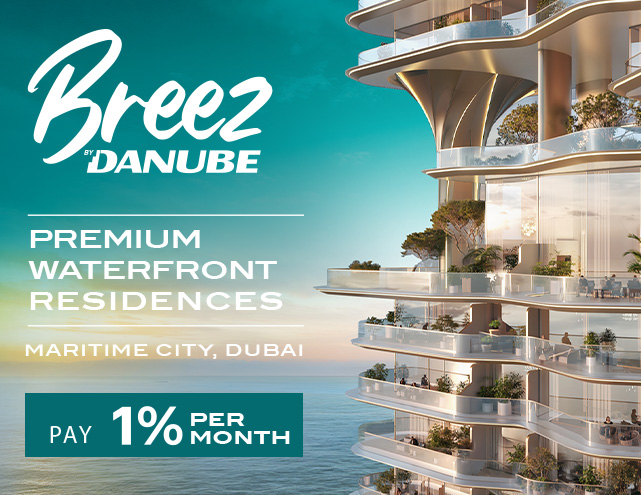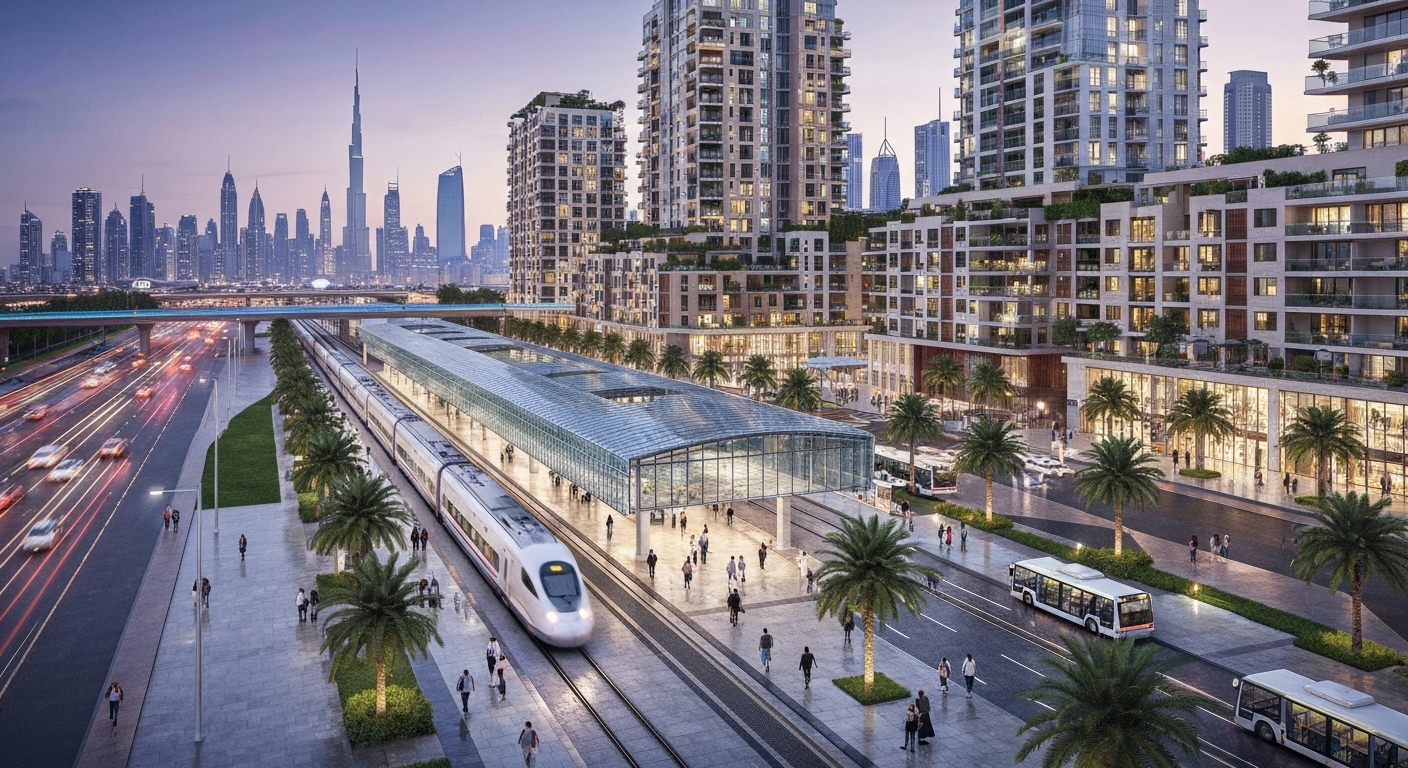Dubai’s real estate market stands at a pivotal juncture as the Etihad Rail project transforms connectivity across the UAE. With property transactions reaching AED 84 billion in Q1 2025 alone, investors are increasingly recognizing the transformative potential of enhanced transportation infrastructure on market dynamics.
Etihad Rail: A Catalyst for Dubai’s Real Estate Transformation
The Etihad Rail network represents more than infrastructure development—it’s a fundamental reshaping of Dubai’s economic geography. This nationwide railway system connects Dubai to Abu Dhabi, Sharjah, and other emirates, reducing travel times and creating new accessibility corridors that directly impact property values.
Recent market data demonstrates that transportation improvements consistently drive real estate appreciation. The Dubai Metro Blue Line extension alone triggered rental appreciations of 12-15% in connected areas, with yields stabilizing 1-2% higher than comparable districts without direct access. This pattern strongly suggests similar opportunities await along the Etihad Rail corridor.
Key Areas Set for Property Value Growth Along the Etihad Rail Network in Dubai
Strategic investors are identifying specific zones positioned for maximum benefit from rail connectivity. Areas near existing transportation hubs, particularly those along Sheikh Zayed Road and Al Khail Road, continue commanding premium accessibility benefits that translate into stronger rental performance.
Emerging neighborhoods like Dubai Hills, Jumeirah Village Circle, and Dubai South show exceptional appreciation potential due to improving infrastructure connections. These districts offer relative value compared to established areas while benefiting from the expanding transportation network.
The integration of rail connectivity with existing metro lines creates compound accessibility benefits. Properties positioned at these intersection points typically experience accelerated value appreciation as they become transportation super-nodes within the broader urban network.
Understanding the Economic Ripple Effect of Enhanced Connectivity on Property Demand
Enhanced connectivity fundamentally alters demand patterns across Dubai’s real estate market. As travel times decrease between emirates, residential areas previously considered remote become viable options for professionals working in different emirates, expanding the effective market for these properties.
The economic ripple effect extends beyond individual properties to entire districts. Improved accessibility attracts commercial development, retail establishments, and service providers, creating comprehensive neighborhood improvements that support sustained property value growth.
Infrastructure development creates a multiplier effect where transportation improvements attract additional investments in schools, healthcare facilities, and recreational amenities. This comprehensive development pattern ensures long-term value stability rather than speculative price increases.
Anticipated Shifts in Rental Yields and Property Appreciation in Rail-Proximate Zones
Current market data reveals significant yield differentials based on transportation access. Districts with proximity to transportation hubs command rental premiums that translate into superior investment returns. The Etihad Rail project expands this premium zone to include previously less accessible areas.
Analysis of comparable international markets suggests rail-proximate zones experience sustained rental yield improvements over 5-10 year periods following service commencement. Dubai’s market characteristics—including strong expatriate demand and limited supply in premium locations—suggest potentially stronger appreciation patterns.
Rental yields in Dubai already outperform major international cities, with infrastructure improvements providing additional upward pressure on returns. Properties positioned along the rail corridor benefit from both immediate accessibility premiums and long-term appreciation as the network matures.
Strategic Investment Opportunities: Leveraging Etihad Rail for Long-Term Real Estate Gains
Forward-thinking investors are positioning portfolios to capitalize on rail-driven opportunities before full service implementation. This strategy involves identifying undervalued properties along planned routes, particularly in emerging areas showing strong fundamentals.
The second half of 2025 presents a strategic window for market entry before potential interest rate reductions drive further price increases in early 2026. Properties near planned rail stations offer compelling value propositions for patient capital seeking long-term appreciation.
Diversification strategies should consider different property types and locations along the rail network. Mixed-use developments near transportation hubs provide multiple revenue streams while residential properties in emerging corridors offer pure appreciation plays.
Beyond Connectivity: Lifestyle Enhancements and Urban Development Driven by Etihad Rail
The Etihad Rail project catalyzes broader urban development beyond transportation benefits. Master-planned communities along the route integrate sustainability features, smart technology, and lifestyle amenities that appeal to discerning residents and tenants.
Environmental consciousness has evolved from marketing concept to fundamental design consideration. Rail connectivity supports sustainable urban development by reducing automobile dependency while enhancing community livability—factors increasingly important to high-net-worth individuals seeking Dubai residence.
The integration of rail infrastructure with Dubai’s existing urban fabric creates opportunities for mixed-use developments that combine residential, commercial, and recreational elements. These comprehensive projects typically demonstrate superior long-term performance compared to single-use developments.
Challenges and Considerations for Real Estate Investors in the Evolving Dubai Market
Despite compelling opportunities, investors must navigate potential challenges including construction timeline uncertainties and market timing considerations. Due diligence should include thorough analysis of rail service schedules and their coordination with property completion timelines.
Market saturation concerns require careful supply-demand analysis. While over 28,000 units are scheduled for completion in 2025, absorption rates remain healthy, maintaining equilibrium that supports sustainable appreciation without overheating risks.
Successful rail-adjacent investments require understanding local market dynamics, regulatory frameworks, and long-term urban planning initiatives. Professional guidance from established developers with proven track records in infrastructure-adjacent developments proves invaluable for optimizing investment outcomes.
The Etihad Rail project represents a generational opportunity for strategic real estate investors willing to position portfolios ahead of transformative infrastructure completion. With proper analysis and timing, these investments can deliver superior returns while participating in Dubai’s continued evolution as a global business hub.




